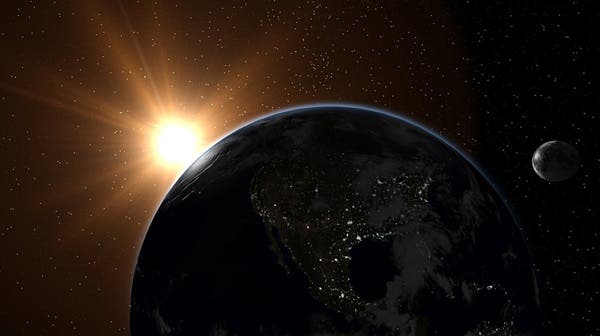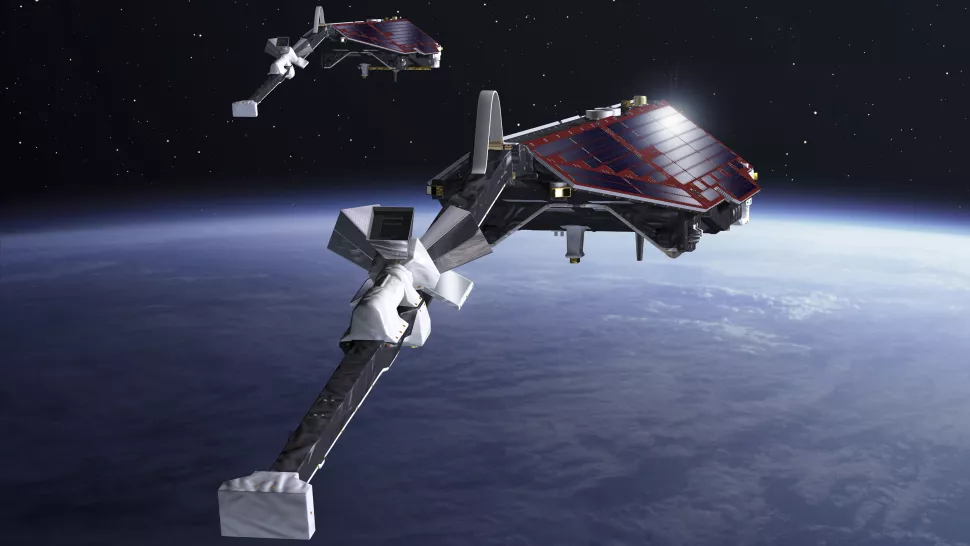
Every 11 years, the sun’s magnetic poles shift their polarity. During this 11-year cycle, solar activity waxes and wanes as the poles are close to pulling their switcheroo. This means an increase in sunspots and solar flares that thrust copious amounts of radiation into space, what’s known as the solar wind, during the so-called ‘Solar Maximum’ and an increase in this solar activity during the ‘Solar Minimum’. Guess which phase we are in right now?
The last cycle ended in December 2019, which scientists confirmed by observing much fewer than average sunspots. But since late 2021, the sun has been very busy, spewing out an increasing amount of solar wind and coronal mass ejections. These highly energetic phenomena have reached Earth’s upper atmosphere where, among other things, they have started to cause some lower-orbiting satellites to start sinking towards Earth — and this has many in the industry highly concerned.
According to a new report by Space.com‘s Tereza Pultarova, who spoke with astronomers in charge of the European Space Agency’s (ESA) Swarm mission, some satellites have started losing altitude at a rate up to 10 times higher than expected. This is likely a pervasive problem facing all low-orbiting satellites, which now number in the thousands.
What a drag
Although satellites give the impression that they can whiz through Earth’s orbit indefinitely, there comes a time for all of them when they will sink towards Earth where they will meet a fiery doom due to friction with the atmosphere.
Satellites stay relatively stable in orbit thanks to a fine balance between the satellite’s speed and the gravitational pull between itself and the planet. Commercial satellites that race past Earth closer to the atmosphere need a much higher speed to prevent them from crashing down than those further out in space.
However, this balance is eventually put out of whack due to the drag from Earth’s uppermost layers of the atmosphere — an incredibly thin atmosphere compared to what we experience at the surface, but still an atmosphere nevertheless. This final frontier of our planet’s atmosphere can extend for thousands of kilometers, up to halfway to the moon by some estimates.
This means that virtually all satellites, space telescopes, spacecraft, and even the International Space Station are subjected to this pesky drag that wants to pull them towards their doom. For this reason, the International Space Station, which sits at an altitude of 420 kilometers (260 miles) high in Low Earth Orbit (LEO), regularly turns on its boosters to regain any lost altitude.

But during a Solar Maximum, the power of this drag is amplified greatly. According to Anja Stromme, ESA’s Swarm mission manager, the interaction between powerful solar winds and the atmosphere causes denser air to shift upwards. More molecules of air mean satellites experience more drag. The atmosphere is still incredibly thin, but not negligible — and this is something that the ESA got to experience first-hand.
In May, ESA Swarm operators had to turn on the onboard propulsion systems of two of its satellites orbiting at an altitude of 430 kilometers (270 miles). If this procedure wasn’t undertaken, the satellites could have been lost. Earlier, in February, SpaceX lost a few dozen Starlink satellites that found themselves in the midst of a solar storm not long after launch.
“In the last five, six years, the satellites were sinking about two and a half kilometers [1.5 miles] a year,” Stromme told Space.com. “But since December last year, they have been virtually diving. The sink rate between December and April has been 20 kilometers [12 miles] per year.”
Humans have been launching satellites into Earth’s low orbit since the late 1950s, and since then we’ve seen six complete solar cycles. Were scientists not aware of this all this time?
They certainly were, but there are a number of things exceptional about this period. Firstly, the solar activity is particularly intense this time, even as far as Solar Maximums go. Secondly, since the previous cycle ended, the space industry has ballooned, spurred by more investments and technological progress such as reusable rockets. Before 2010, we used to launch 60 to 100 satellites a year. In 2021, we launched almost 1,800.
Many of these satellites are small and serve a particular purpose, such as beaming internet in the case of Starlink’s swarm or measuring physical properties, as is the case of many tiny cubesats. These cheap satellites have no propulsion systems, meaning they are destined to have a short lifetime in orbit. So although orbital decay has always been on the minds of space operators, they are only now beginning to face the harsh reality of a Solar Maximum. We don’t know how many of these satellites will be destroyed, but one thing’s for sure: no one will dare to underestimate orbital drag in the future.
“The solar cycle 25 that we are entering now is currently increasing very steeply,” she said. “We do not know if this means that it will be a very tough solar cycle. It could slow down, and it could become a very weak solar cycle. But right now, it’s increasing fast.”
Clean up on low orbit
There’s a silver lining to all of this. Sure, operators might lose billions worth of satellites, but this new and strong Solar Maximum could help address a much worse problem we’ve been having for some time and which has only gotten worse with time: space junk.
NASA is monitoring some of the biggest pieces of debris out there, including approximately 20,000 objects as big as or bigger than a baseball and 50,000 objects as big as a marble. Smaller pieces of debris, however, are virtually undetectable right now, but NASA estimates there are millions of objects that are 50 microns to 1 millimeter in diameter.
That might not seem like such a big deal but consider that these tiny pieces of debris travel at 17,500 miles per hour. At these velocities, even an object with a tiny mass can exert a powerful kinetic energy capable of significant damage upon impact. Everyone’s seen the movie Gravity, right?
Cleaning up Earth’s orbit is a super expensive and complicated process. But, frankly, where technology is currently at, it’s like trying to clean a beach of sand, one tiny grain at a time. Pretty futile.
Yet like a heavy rain that cleans up our grimy city streets for free, nature may lend a helping hand here, purifying Earth’s orbit. Hopefully, if this works and the orbit is somewhat litter-free, we won’t repeat the same mistake twice.






